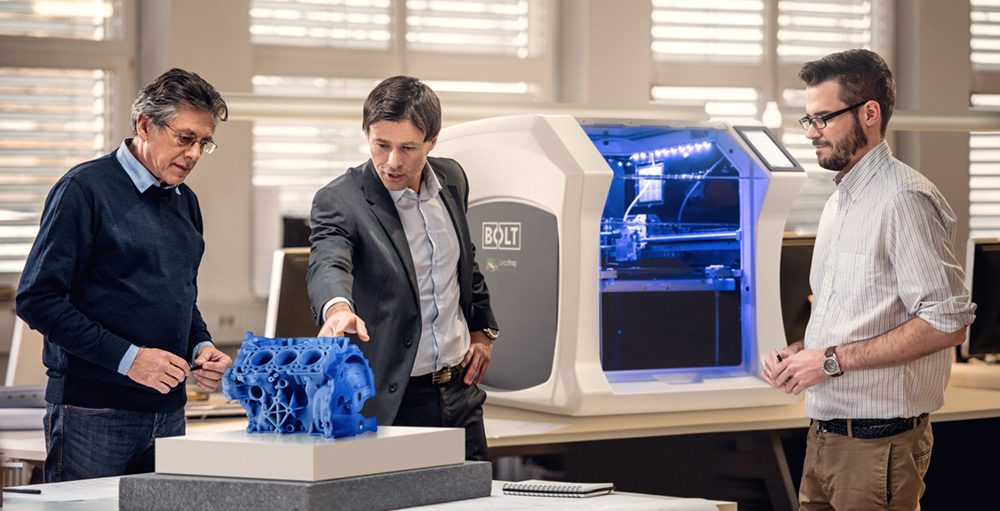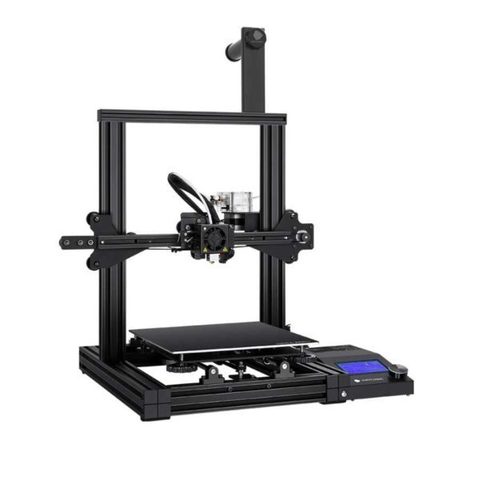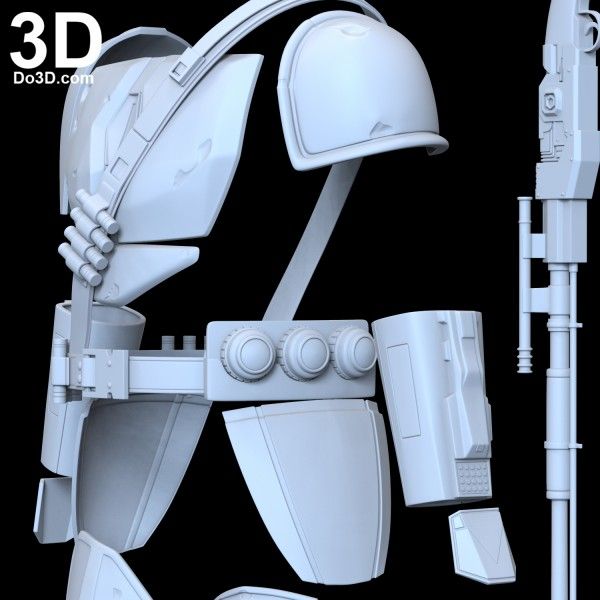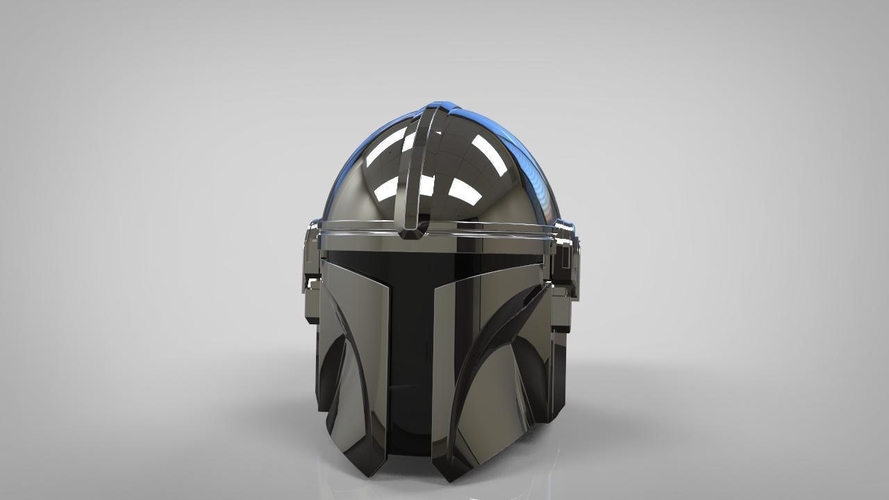3D printer future possibilities
How 3D Printing Could Revolutionize the Future of Development | by +SocialGood
By Annie Rosenthal as part of the 2018 +SocialGood series on emerging technologies
3D printing, or additive manufacturing, has the potential to democratize the production of goods, from food to medical supplies, to great coral reefs. In the future, 3D printing machines could make their way into homes, businesses, disaster sites, and even outer space. Get 3D printing basics from this 2 minute Mashable video.
As this technology spreads, it could help connect marginalized and difficult-to-reach populations with essential products. All in all, this emerging technology has the potential to revolutionize our societies, and transform the development sector. In order for this to happen, we need to ensure that this emerging technology gets into the hands of development practitioners and stakeholders around the world. Here is one way that people are working to make 3D printing more accessible.
Like content on the top technologies and how they can be used for social good? Get updates about 3D printing and more with the +SocialGood newsletter.
The Sustainable Development Goals carry a big promise for the future of our people and planet. Goals this big will need big changes in order to succeed. 3D printing is being used to progress many of the Global Goals, and has the potential to make a further impact.
Supporting the fight against hunger and homelessness
3D printing is being explored as a major solution for current and future levels of hunger and homelessness. For example, Anjan Contractor hopes that one day, his 3D food printer will be able to empower the earth’s population to feed themselves “customized, nutritionally-appropriate meals synthesized one layer at a time, from cartridges of powder and oils they buy at the corner grocery store.” These cartridges would be easy to transport, long-lasting, and could be made of sustainable materials like insect protein. 3D printing is also revolutionizing home construction, making it cheaper and more efficient.
3D printing is also revolutionizing home construction, making it cheaper and more efficient.
- This 3D printing technology uses industrial solid waste to replace cement in the production of a low-carbon building (Sustainia)
- How 3D printing could end food waste and tackle hunger (Quartz)
- This 3D printer can print a house in less than 24 hours
Transforming humanitarian response and modern medicine
3D printing also is being used to get essential goods and services to disaster areas and refugee camps, allowing workers and stakeholders to have access to the tools they need to recover. For example, in Nepal, the United Nations is implementing 3D printing as part of their plan for earthquake response, including printing customized pipe parts necessary for sanitation infrastructure. 3D printing is also enabling new and essential medical tools to get into the hands of people who need them, from medical possibilities like an 3D printed artificial heart to basic tools like umbilical cord clips.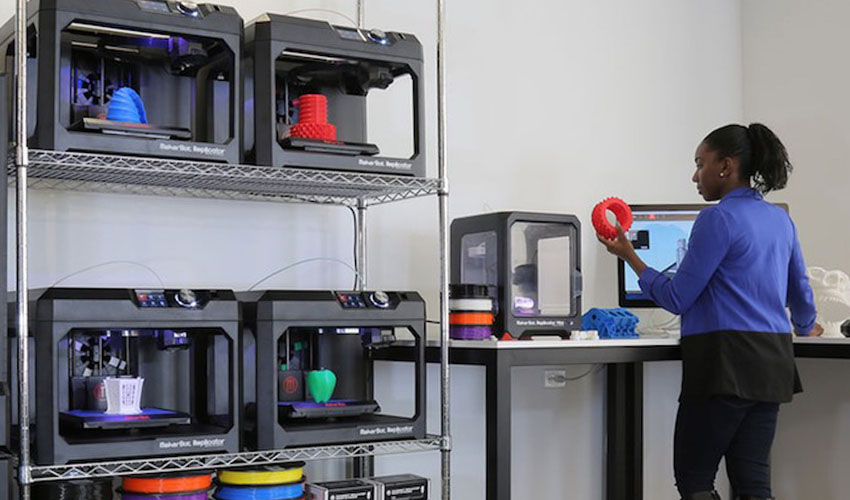
- The future of medicine is 3D printing (Futurism)
- How 3D printing is being used to transform aid (World Economic Forum)
- Tech eases Syrians’ trauma in Jordanian refugee camp (BBC)
Protecting our planet
3D printing is also allowing us to use old materials in new ways that are more sustainable. For example, researchers have figured out how to convert carbon dioxide into concrete using 3D printing. Utilizing former waste to create future products makes our society have more efficient consumption. 3D printing innovators are even exploring how to make the process itself more sustainable, including using algae based filaments to reduce the energy necessitated for the printing process. The creative use of materials and production methods opens up new possibilities as we approach climate action and sustainable living.
- Fred the tortoise had his damaged shell replaced by a 3D printed shell made of corn plastic (Futurism)
- These 3D printed shoes are made from plastic ocean waste (Sustainia)
- Engineers are 3D printing coral reefs to help save our oceans (Futurism)
Ensuring access
The United Nations is working with innovators and programmatic implementers to make this transformative technology more accessible to people worldwide. Currently, they are mostly confined to technical university and specialized labs, especially in developing countries. However, in order for the true possibilities of the technology to be realized, it must be brought outside those spaces and into the hands of stakeholders and local changemakers. United Nations agencies, like UNICEF, are using their reach and resources to help make this a reality. Check out UNICEF’s Innovation Fund here.
Currently, they are mostly confined to technical university and specialized labs, especially in developing countries. However, in order for the true possibilities of the technology to be realized, it must be brought outside those spaces and into the hands of stakeholders and local changemakers. United Nations agencies, like UNICEF, are using their reach and resources to help make this a reality. Check out UNICEF’s Innovation Fund here.
- UNDP Egypt hosted a ‘how to build a 3-D printer’ workshop to make the technology more affordable and accessible locally (UNDP)
- Why it’s important to bring 3D biofabrication and other health technologies to the most disadvantaged (UNICEF Innovate)
- UNDP Uzbekistan named a 3D printing startup the number 1 project during their ‘Startup Initiatives — 2017" programme (UNDP)
Join +SocialGood throughout May as we explore the opportunities 3D printing presents to help progress the Global Goals. Share your thoughts, solutions, and ideas with #SocialGoodTech!
Stay-tuned for our #SocialGoodTech Twitter chat on 3D printing for the Global Goals! Join the conversation at 10am ET on May 31st.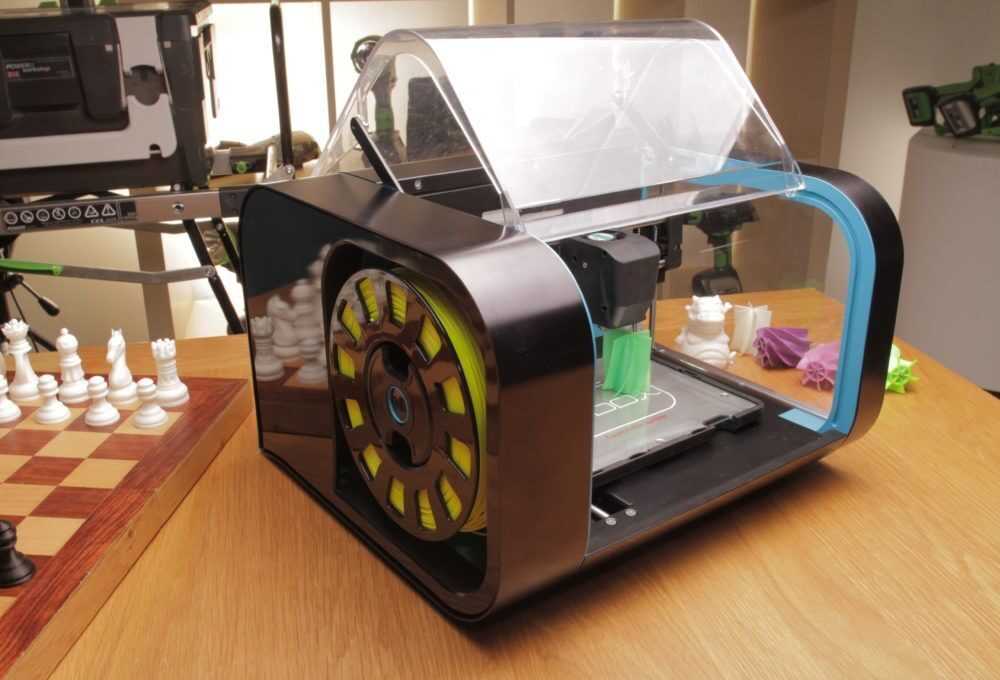
10 Predictions on the Future of 3D Printing [Expert Roundup]
21 August 2019
Without a doubt, 2019 is an exciting time for 3D printing. The industry continues to move towards industrialisation, and the technology is increasingly becoming part of the wider manufacturing ecosystem.
But in such a rapidly evolving industry, it can be difficult to keep up with the key trends that are driving the future of 3D printing.
To help you better understand where 3D printing is headed, we’ve sifted through over 30 of our Expert Interviews conducted over the last 12 months and extracted key insights as to what the future holds for this exciting technology.
Contents
1. 3D printing will become a mainstream technology for serial production A 3D-printed stator ring and impeller [Image credit: VELO3D]
“Additive manufacturing is headed for very exciting times because it’s gradually becoming mainstream.
”
Andy Kalambi, CEO of Rize
3D printing has long passed the point of being viewed only as a prototyping solution.
Everyday, companies are finding new ways to incorporate the technology into their production, with applications ranging from tooling to spare/replacement parts and some end-use components.
From automotive to consumer goods, companies across industries are becoming aware of the advantages 3D printing offers for production. According to Sculpteo’s 2019 State of 3D Printing report, 51% of companies are actively using 3D printing for production.
There are, of course, the well-publicised cases. For example, large automotive companies like Ford, Volkswagen and BMW are already producing 3D-printed parts for their vehicles. Late last year, BMW announced that it had fitted its one-millionth 3D-printed part for its BMW i8 Roadster.
While the overall volume of parts being printed in these cases is small relative to mass manufacturing volumes, the number, as well as the range of parts produced with 3D printing, are only set to increase.
The next step for both the technology and the industry will be to maintain this momentum and work towards enabling more applications on a larger scale.
“We’re reaching an inflection point and the number of parts that are actually going into production is increasing. Five years from now, you’ll see a lot of contract manufacturers that have scaled up considerably and have hundreds of these systems on their floor, producing parts with long-term contracts for production.”
Zachary Murphree, VP of Technology Partnerships at VELO3D
A key element that will enable such production volumes is the technology. Over the last few years, new technologies have been brought to market, and a number have already been announced for the years ahead.
For example, on the metal 3D printing side there is huge potential for newer metal binder jetting technologies to carve out a larger share of the traditional metal manufacturing market. Companies like Desktop Metal, 3DEO, ExOne, HP and GE are all working on next-generation metal binder jetting solutions to achieve this.
Companies like Desktop Metal, 3DEO, ExOne, HP and GE are all working on next-generation metal binder jetting solutions to achieve this.
With lower hardware and material costs than other metal 3D printing technologies, these metal binder jetting machines have the potential to offer higher-volume part production at a cost-competitive price.
Of course, 3D printing will not replace machining, casting or injection moulding. The true goal for the technology is to become a viable production method that can be used on par with other technologies.
As more effort is being put into ensuring greater repeatability and speed with industrial 3D printing, we’re getting ever-closer to reaching this goal.
“One important trend is the development of design software tools for AM. The next step is for them to become fully and seamlessly integrated into popular CAD software products.
”
Terry Wohlers, founder and President of Wohlers Associates
Designing for additive manufacturing is a challenging process, not least because it can be counterintuitive for engineers that have been trained to design for traditional manufacturing.
Further complicating this is Computer-Aided Design (CAD) software, much of which until recently hasn’t been optimised for the design requirements of 3D printing.
“Additive manufacturing can do some incredible things in terms of creating complex geometries, but to expect one person or even a team of people to sit down and create those sorts of geometry would create a real bottleneck if it was all being done using conventional tools.”
Ian Campbell, Professor at Loughborough University
For example, it can be difficult to use traditional CAD software to design components made with graded materials, create lattice structures or model porosity.
Combining multiple software packages can alleviate this limitation to a degree. However, switching between different software solutions is a highly inefficient process. In an ideal world, engineers and designers would work in a single design environment without the need to move data from one software product to another.
Fortunately, software companies are beginning to develop integrated design solutions for additive manufacturing.
Companies like Autodesk, Dassault Systèmes and PTC are beginning to explore ways to make it as easy as possible for engineers to optimise their designs for additive manufacturing.
Take Autodesk’s Netfabb as an example. Developed to work with 3D printing STL files, Netfabb can analyse and repair files, generate support structures and lattices and run a simulation for a design of a metal 3D-printed part — all in one package.
Similarly, PTC is offering its Creo 6.0 software to enable design and print preparation in one environment.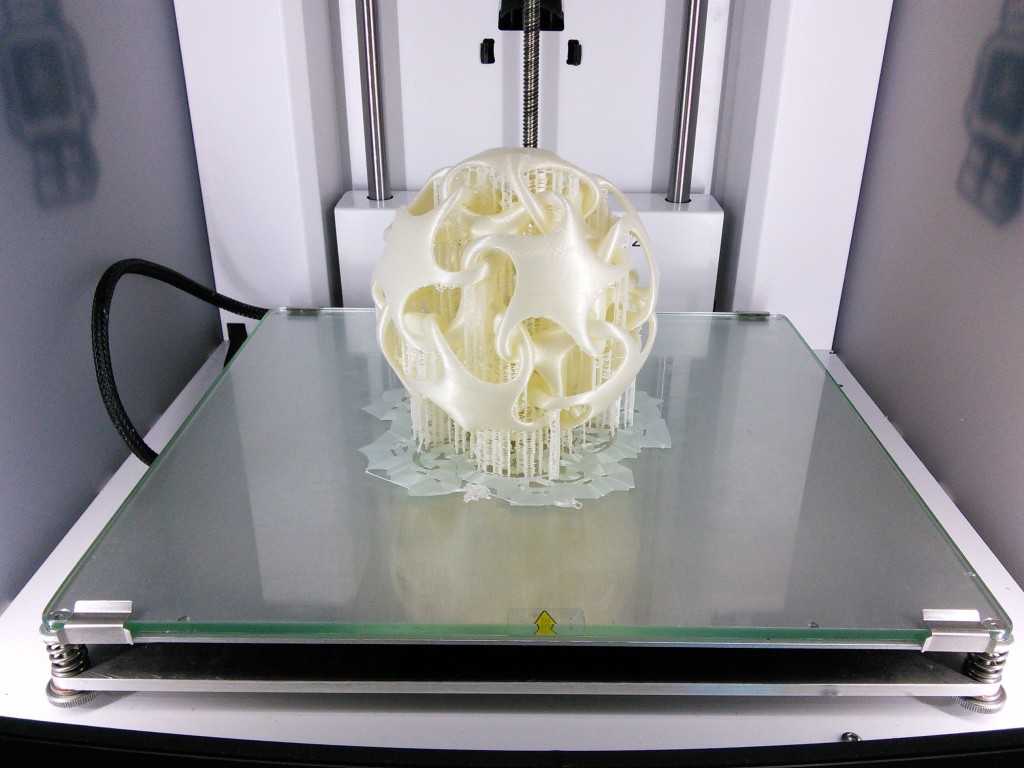 At the end of 2018, PTC acquired generative design software company, Frustum. The company is now working to add generative design technology, which is often combined with 3D printing, to its CAD platform.
At the end of 2018, PTC acquired generative design software company, Frustum. The company is now working to add generative design technology, which is often combined with 3D printing, to its CAD platform.
Ultimately, creating integrated 3D printing software solutions will be a crucial piece to the puzzle of taking the technology into the mainstream.
“We’ll see more software tools that help engineers design parts better for a given process. Software-driven build setups like orientation, pre-deformation will be part of that … These developments will help to reduce the number of iterations needed, especially if the goal is printing for production.”
Greg Paulsen, Director of Application Engineering at Xometry
“In terms of skills, in my opinion, innovation is all about people and technologies.
There’s no point in pushing for advanced technologies without the people to adopt them.”
Revannth Murugesan, Managing Director at Carbon Performance
Much has been said about the need for more education within the 3D printing industry. Our recent State of the Industry Survey revealed a lack of education as being the biggest challenge faced by service bureaus today.
While adopting 3D printing for prototyping is relatively straightforward, establishing 3D printing for production can be challenging. Not only is investment in hardware required, but companies must also commit the time to develop the expertise needed.
Lack of expertise, in particular, can create a lot of barriers to entry. For one, without proper knowledge about additive manufacturing, companies will likely struggle to develop a business case or use case for 3D printing.
“That workforce element is really critical right now. There are not enough engineers, managers, executives who truly understand the technology well enough to work and develop a strategy to get what they need to get out of it.
”
John Barnes, Founder of The Barnes Group Advisors
“The industry is recognising what additive manufacturing can’t do as well as the fact that it can do a lot more than most are using it for today.”
Harold Sears, Technical Leader of Additive Manufacturing Technologies at Ford
That said, awareness about the capabilities of 3D printing is increasing gradually. A lot of effort is being put into educating the market on how to get started with 3D printing and extract the most value out of it.
At the same time, companies are launching both online and on-site courses, organising user tradeshows and workshops and creating educational content to spread the word about 3D printing.
Consultancy firm, the Barnes Group Advisors, for example, launched an online course with Purdue University earlier this year to provide engineers with the ability to attain relevant knowledge in additive manufacturing.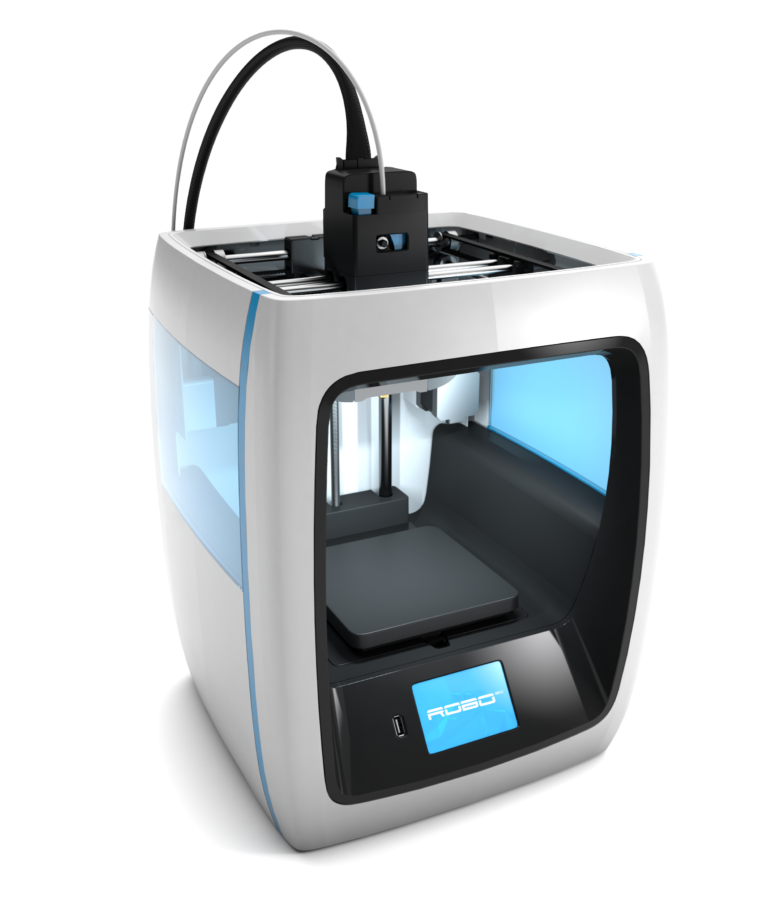
Only when companies learn about the capabilities and limitations of 3D printing, will they be able to use this knowledge to develop successful applications for the technology.
Take Boyce Technologies as an example. The engineering firm purchased a large-scale 3D printer to create prototypes for communications systems like information kiosks and emergency response systems.
However, the company was willing to experiment with 3D printing to understand its true capabilities.
By learning the ins and out of the technology, Boyce discovered that the same 3D printer used for prototyping could also be used to make certain end-use polymer parts. Since then, the technology has become a key part of Boyce’s business and is used for production applications 90% of the time.
Ultimately, as the understanding of AM grows, its users will be able to identify more industrial applications for the technology, pushing the scope of 3D printing to new horizons.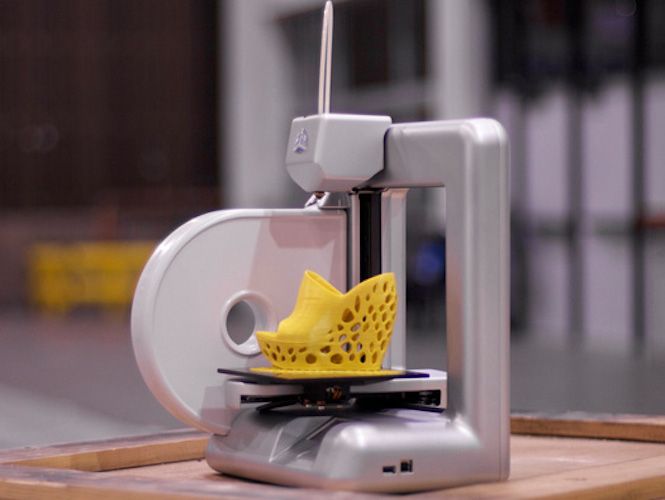
“In dentistry, you could, in theory, have a great case for converting 80% plus of the means of production to an additive technology.”
Scott Dunham, Vice President of Research at SmarTech Analysis
3D printing is already playing a huge role in the dental industry, producing crowns, surgical guides and the majority of dental aligner moulds. But the technology has the potential to become a dominant technology in this sector.
A report by SmarTech Analysis indicates that 3D printer sales within the dental industry will exceed sales of machining hardware by 2025, and the technology will become the leading production method for dental restorations and devices worldwide by 2027.
Driving this paradigm shift is the evolution of resin-based 3D printing technologies like SLA, DLP and material jetting.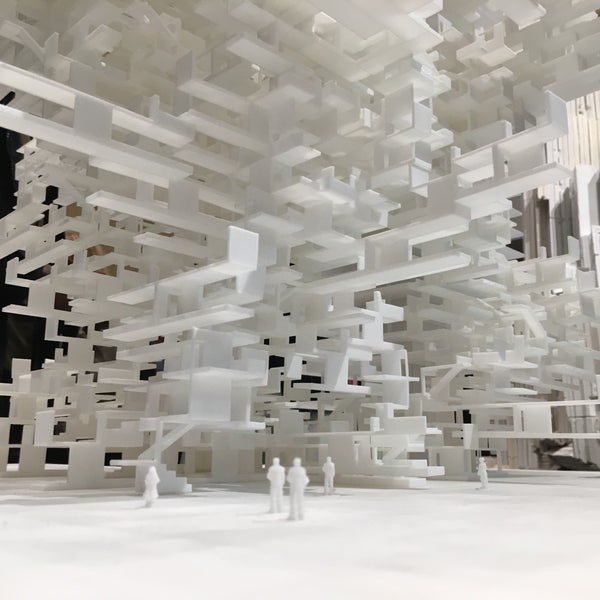 Resin-based 3D printers can produce custom dental devices with excellent surface quality and fine feature detail at a fast speed. The dental industry can benefit from these capabilities, as dentists can provide services faster and cheaper.
Resin-based 3D printers can produce custom dental devices with excellent surface quality and fine feature detail at a fast speed. The dental industry can benefit from these capabilities, as dentists can provide services faster and cheaper.
“We’re seeing that 3D printing is becoming one of the key tools in areas like dental care and dental restoration. The digital thread there has been largely developed all the way from intraoral scanning to the workflows and the planning — not just in the lab, but also in the dental clinic. So there you can see a market that is ready for mass adoption.”
Avi Reichental, Founder of XponentialWorks
Furthermore, resin 3D printers are becoming increasingly affordable for dental labs, with a price point of roughly $5,000 on average. These printers are also optimised to work with certified dental printing resins, the number of which has significantly grown over the last few years.
EnvisionTec, one of the largest resin 3D printer manufacturers, offers 13 different types of resin materials optimised for dental applications.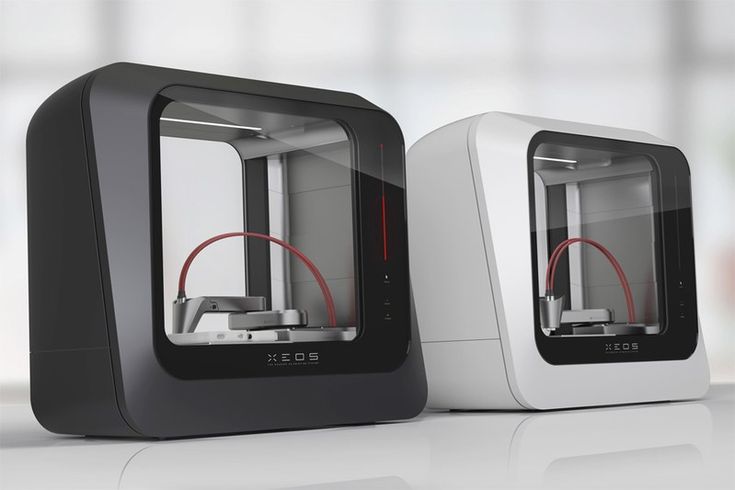
Formlabs, another key player in the resin 3D printing market, offers 5 types of resins, some of which can be used to directly produce dental prosthetics. The company is also said to have increased its market share in the dental 3D printing market more than 20-fold over the last two years.
Additive manufacturing has penetrated a significant number of sectors and industries. However, dental appears as the primary market in which digital manufacturing in the form of 3D printing can be embraced to the fullest.
“Part of the machine learning process is to introduce a high level of repeatability and enable the user to more easily predict how performance is going to function.”
Joshua Martin, CEO of Fortify
Making 3D printing more efficient and productive is an ongoing quest within the industry. One trend enabling this is the development of smarter systems, powered by sensors and machine learning.
One trend enabling this is the development of smarter systems, powered by sensors and machine learning.
3D printer manufacturers are beginning to fit their systems with sensors to enable in-process monitoring. Sensors and cameras placed inside a 3D printer can be used to measure multiple aspects of a build in real-time, helping to document the build process and ensure requirements are met.
For example, with powder bed metal 3D printing, cameras can capture the size and temperature of the melt pool, which directly impacts the microstructure, material properties, surface finish and overall part performance.
Integrating machine learning algorithms with such sensors can help to make 3D printing a much smarter process. Sensors can gather valuable data which then can be fed to a machine learning system.
The system will analyse the data and then provide feedback on how the process can be improved. It can be used to predict the likelihood of defects or build failure, enabling engineers to intervene the process and prevent any defects early on.
Currently, this concept is still in the early stages, with only a few solutions available on the market. VELO3D, a US-based metal 3D printer manufacturer, has developed a system equipped with sensors which can report back on the status of the build. Similarly, 3D printer manufacturer, EOS, offers the EOSTATE monitoring suite, which can capture quality-relevant data in real-time.
MIT startup, Inkbit, is pairing its multi-material inkjet 3D printer with in-built scanners and a machine learning system. The monitoring system scans each layer of the object, while the machine learning system uses that information to predict the warping behaviour of materials and automatically correct any errors in real-time.
“I think that’s the Holy Grail for AM because with in-process control you’re able to almost immediately react on deficiencies within your process.”
Yves Hagedorn, Managing Director at Aconity3D
In the future, we anticipate that all 3D printers will be integrated with smart technologies like sensors and machine learning.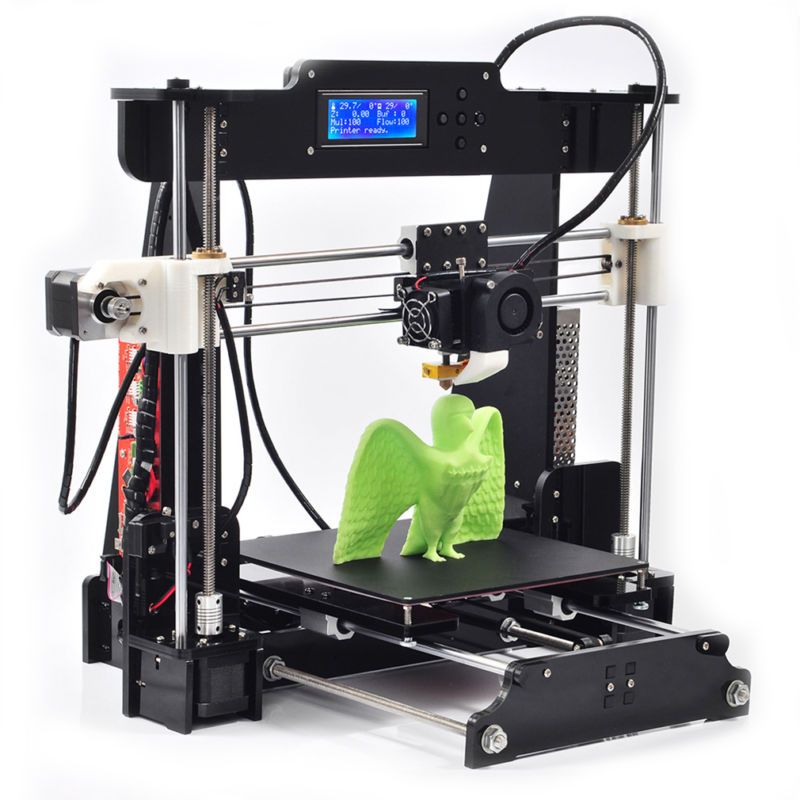 These technologies, combined with 3D printing, will significantly increase process repeatability by reducing the risk of build failures.
These technologies, combined with 3D printing, will significantly increase process repeatability by reducing the risk of build failures.
A more intelligent process will ultimately result in easier quality assurance and open the door for greater productivity with 3D printing on the factory floor.
Service bureaus are a vital segment of the additive manufacturing industry, helping to further the advancement of the technology. Looking to the future, the service bureau segment is poised for continued growth.
This prediction is supported by a number of experts interviewed for our State of the 3D Printing Industry Survey Report and respondents giving a positive outlook for the year ahead.
The growth will largely be driven by the increasing specialisation in certain 3D printing technologies (e.g. metal AM) or industries (e.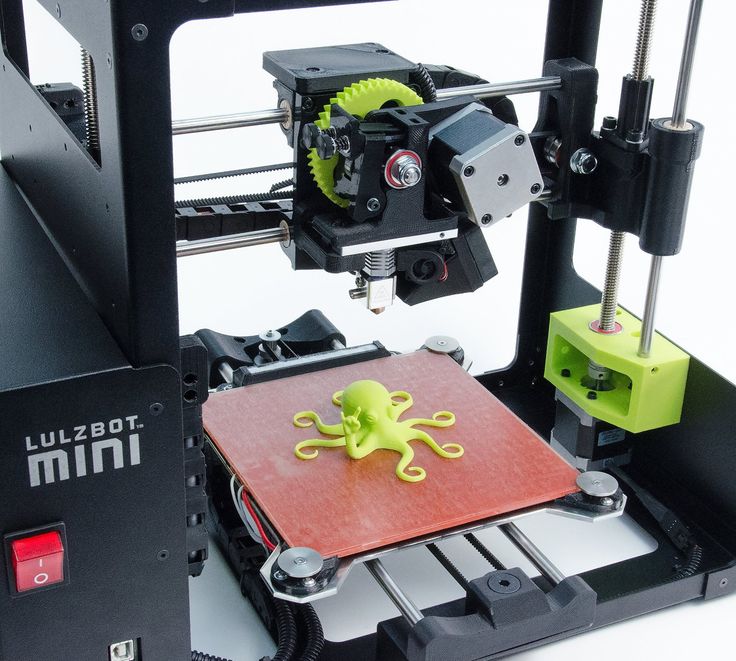 g. medical).
g. medical).
“The specialists who can cultivate unmatched expertise in a specific area of AM should see a return on that investment in expertise. On the other end, those companies offering an array of printing technologies to make parts for customers, as well as supporting post-processing and design services for each, should also eventually rise to the top.”
Scott Dunham, Vice President of Research at SmarTech Analysis
Service bureaus will create a lot of opportunities for other industry players to expand into.
“There will be a lot of mergers and acquisitions over the next few years. For some of the larger manufacturers of 3D printing materials, it will be a natural move to have a service bureau attached to their business. There’s a real opportunity for the other manufacturers to do deals or to buy up service bureaus to promote their particular materials.”
Jonathan Warbrick, Business Development Manager at Graphite Additive Manufacturing
We’ve already seen this prediction coming true with recent news of Sandvik, a producer of metal powders for AM, acquiring a stake in 3D printing service provider, Beam-IT.
On the other hand, manufacturing marketplaces like 3D Hubs and Xometry, which offer companies access to a global network of suppliers (for both AM and traditional manufacturing services) on demand, will also see rapid growth.
Manufacturing is hard pressed to provide a more agile response to rapid changes in customer demand, technology and markets. Operating a Manufacturing-As-A-Service (MaaS) business model, online 3D printing platforms are able to offer agility and quicker turnarounds, filling what seems to be a lucrative market gap.
“[MaaS is] a win-win because the shops are getting work without having any need to do marketing for it. We’re getting fulfilment and quality parts made. And finally, the customer has a one-stop location to get their parts ordered over many manufacturing technologies.”
Greg Paulsen, Director of Application Engineering at Xometry
“When it comes to metal 3D printing, we’ve just scratched the surface.
”
Scott Dunham, Vice President of Research at SmarTech Analysis
Metal 3D printing remains one of the fastest growing segments in 3D printing. However, the many experts we’ve interviewed agree that, although metal 3D printing market has evolved significantly over the last decade, its real potential has yet to be fully realised.
“When you compare the size of the AM industry with the size of the traditional manufacturing industry, we have a lot of room to grow.”
Zachary Murphree, VP of Technology Partnerships at VELO3D
According to SmarTech’s Scott Dunham, materials will be key to the maturation of metal 3D printing:
“As the industry matures, you would see, of course, much more emphasis on materials, because the utilisation rates of the 3D printers ideally have climbed to support higher volume manufacturing and more regular serial use.”
EOS, a key player in the world of powder bed fusion 3D printing, is heavily focused on developing more materials for metal AM. In May 2019, the company launched four new metal materials, including stainless steel CX, aluminium AlF357 and two grades of titanium.
In May 2019, the company launched four new metal materials, including stainless steel CX, aluminium AlF357 and two grades of titanium.
Another vital requirement for the adoption of metal 3D printing for production is quality assurance.
“Quality control, i.e. understanding the quality requirements and being able to validate your part is really going to make a difference going forward.”
Doug Hedges, President of Sintavia
When a reliable, faster process and a broader material choice come together, “we’ll see adoption steadily improve throughout all industries, not just the early adopters, like aerospace and medical”, believes Dave Conover, ANSYS’ Chief Technologist of Additive Manufacturing.
Indeed, manufacturers in the automotive, industrial goods and energy sectors are beginning to gain confidence in metal 3D printing as a solution. BMW has recently launched its 3D printing production of metal roof brackets, while companies like GE and Conflux Technology are developing next-generation heat exchangers with the technology.
Undoubtedly, there are many opportunities left to be explored with metal 3D printing. To capture those, the industry needs to collaborate more vigorously on developing standards and best practices to ensure repeatable processes and high-quality results.
“The composite space is perhaps the newest segment in 3D printing. There are challenges that come with this, but there are also a lot of opportunities.”
Joshua Martin, CEO of Fortify
The composite market is one of the key emerging opportunities for 3D printing. Composites are lightweight, strong materials, highly sought-after in industries like aerospace, automotive, oil and gas and industrial goods.
A SmarTech Analysis report estimates that composite 3D printing will grow into a nearly $10 billion business within the next decade.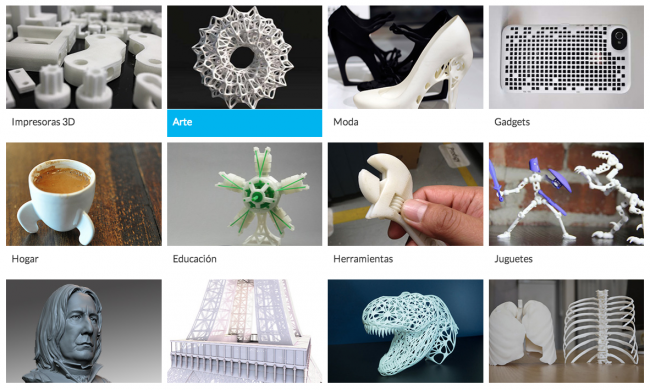 Within this timeframe, end-use parts are expected to become the largest revenue opportunity.
Within this timeframe, end-use parts are expected to become the largest revenue opportunity.
The ability to streamline and cut the cost of traditional composite manufacturing will be the key driving factor behind this growth.
“Composite manufacturing is currently very labour, resource and capital intensive, which means that it doesn’t really scale to large volumes. Additionally, there are long design cycles because of inadequate software and inefficient simulation.”
Wiener Mondesir, Co-Founder and Chief Technology Officer at Arevo
The number of companies looking to automate composite manufacturing with 3D printing is growing by leaps and bounds. Currently, Markforged is arguably the biggest player in terms of market presence but other companies like Arevo, Fortify, Impossible Objects and Thermwood are seeing notable growth as well.
Fortify, for example, recently closed a $10 million series A funding round, while technology company, Arevo, announced the successful application of its composite 3D printing technology to manufacture bike frames. Thermwood’s Large Scale Additive Manufacturing technology is also gaining traction in the production of composite tooling for aerospace applications.
Thermwood’s Large Scale Additive Manufacturing technology is also gaining traction in the production of composite tooling for aerospace applications.
Clearly, the potential for the composites 3D printing segment is huge. However, to continue to evolve, companies will need to work on further improving their technologies and expanding the scope of applications suitable for composite 3D printing.
Automation will be the next step in the evolution of additive manufacturing. Achieved through a combination of hardware and software, as well as robotics, sensors and networks, automation will ensure more streamlined processes as part of an end-to-end digital production cycle.
On the hardware side, companies are launching new, integrated production units, which incorporate robotics and smart factory concepts to automate various steps of the manufacturing workflow.
For example, Digital Metal, a manufacturer of binder jetting metal 3D printers, has paired its systems with robots, which handle manual work like removing build boxed and delivering them to a post-processing unit. Jabil is also using robots to automate part handling in secondary AM processes and computer vision to automate inspection processes.
On the software side, workflow automation is gaining traction, as companies realise that achieving serial production with 3D printing will be virtually impossible without an end-to-end management system in place.
Furthermore, the AM post-processing stage, which has typically been a manual process, is becoming more digitised.
“Post-processing automation will become one of the major things to watch out for. This is because the real step change will be in the ability to automate post-production.”
Neil van Es, Founder of Parts on Demand
Several companies, such as Additive Manufacturing Technologies and Post Process Technologies are now overcoming this bottleneck by providing post-processing solutions that speed up the process of support removal and surface finishing – through automated post-processing machines.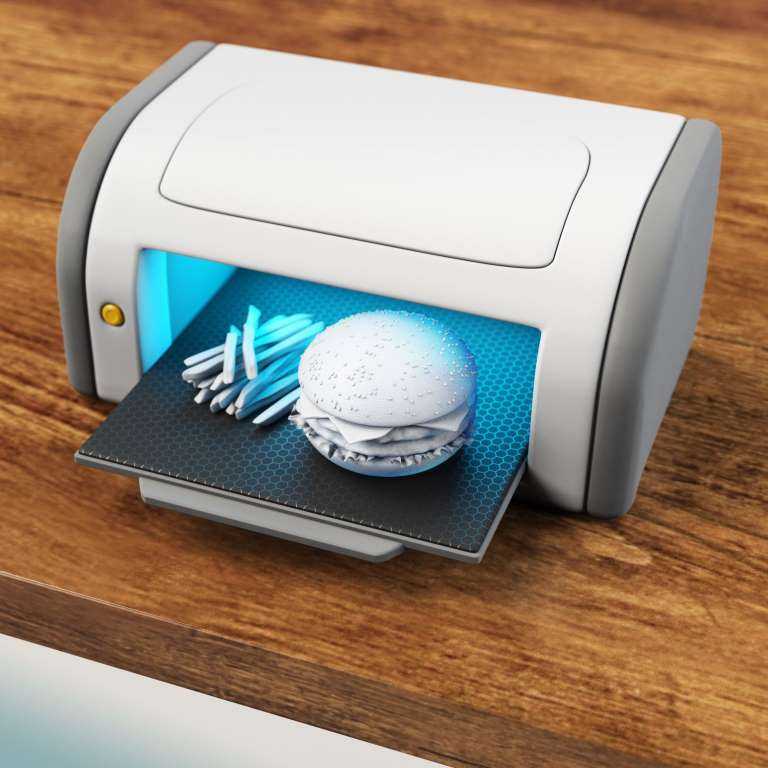
Ultimately, adding automation to a 3D printing equation will enable manufacturers to transform 3D printing to a continuous process that will work much better in a volume production setting.
“In the next couple of years we will see a lot more competitive chaos resulting from a fairly crowded field.”
Scott Dunham, Vice President of Research at SmarTech Analysis
With new players entering the industry, there is an increasing level of competition within the AM market. A growing number of startups, as well established companies outside of AM, are entering the 3D printing arena looking to capitalise on the industry’s growth.
AMFG’s Additive Manufacturing Industry Landscape 2019 has identified more than 80 3D printer manufacturers, the majority of which appeared in the last five to ten years.
There’s a huge potential for newcomers to leapfrog more established players.
As Avi Reichental, Founder of advisory firm, XponentialWorks, points out, “[established companies] have a rather unfair disadvantage vis-a-vis new players because they have lots of legacy issues to deal with. Since they’re operating within certain technologies, they’re more likely to implement and introduce linear, incremental improvements. In contrast, a completely new company can solve a similar problem without any of the legacy technology and organisational issues.”
As competition heats up, the industry players will have to refocus and reinvent to survive. We’ve already seen some moves in this direction. For example, Ultimaker has rebranded recently to strengthen its brand as a professional, B2B 3D printing business. 3D Hubs, once a community-based 3D printing marketplace, has recently shifted its focus to the B2B industrial space.
“We live in a period in which you either innovate or evaporate. In other words, you either disrupt or you will be disrupted.
”
Avi Reichental
Clearly, the landscape is becoming more competitive than ever. That said, competition can be a positive sign, pointing to the growth of the industry. Competition can help to push the industry forward, as it forces companies to focus on innovation and development.
However, increasing competition also means that it’s a crucial time for companies to remain innovative to maintain their place in the market.
“I think the additive manufacturing industry will deliver on its promise.”
Simon Fried, Co-Founder of Nano Dimension
The trends discussed above reflect one key idea: 3D printing is reaching maturity. The advancements in the hardware, software, materials and applications suggest that 3D printing will eventually become yet another manufacturing technology.
Naturally, the adoption rate of 3D printing will increase over time, with some segments like dental almost entirely switching to 3D printing.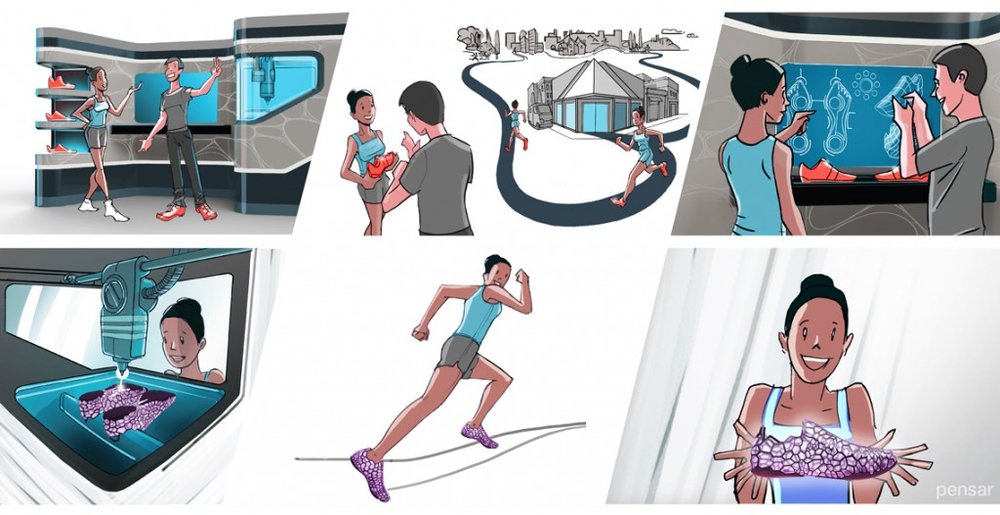 The growing awareness of 3D printing and its benefits will facilitate this growth.
The growing awareness of 3D printing and its benefits will facilitate this growth.
“I really do think you will see the impact of digital manufacturing as a solution for full-scale manufacturing.”
Philip DeSimone, Co-Founder and VP of Business Development at Carbon
In the meantime, the competitive 3D printing landscape will require companies to differentiate themselves from competitors by leveraging their unique expertise and developing a clear value proposition.
Considering the recent progress of the technology and these expert predictions, 3D printing is clearly headed for a bright future of digital, smart manufacturing.
More Expert Roundups:
10 of the Biggest Challenges in Scaling Additive Manufacturing for Production [Expert Roundup]
Expert Roundup: 20 Experts Share Their 3D Printing Predictions for 2020
what lies ahead for 3D printing
The prospects for 3D printing
Even now, the prospects for 3D printing are extremely promising. Scientists are actively developing existing 3D printing techniques, developing new technologies and types of materials, and finding new areas of application. Many call 3D printing the technology of the future, and for good reason. The technique is able to completely turn the usual way of life, changing the way most things are produced. In fact, a 3D printer is a real multifunctional factory, small and compact. Due to this, the future of 3D printing can definitely be called successful.
Scientists are actively developing existing 3D printing techniques, developing new technologies and types of materials, and finding new areas of application. Many call 3D printing the technology of the future, and for good reason. The technique is able to completely turn the usual way of life, changing the way most things are produced. In fact, a 3D printer is a real multifunctional factory, small and compact. Due to this, the future of 3D printing can definitely be called successful.
3D printers can significantly reduce production costs, thereby reducing the cost of products. Judging by the growing trend towards the popularization of 3D technologies, raw materials for 3D printing will become the main commodity unit in the future. In general, the prospects for 3D printing are defined for many areas. And now we will try to reveal them as much as possible.
The Future of 3D Printing
If you try to imagine the future of 3D printing, your imagination paints a rather interesting picture. Given the great interest of scientists in the 3D bioprinting technique, which is one of the most promising 3D printing technologies, the production of artificial organs on a 3D printer is not far off. It is also safe to say that the future of 3D printing will bring us dramatic changes in areas such as:
Given the great interest of scientists in the 3D bioprinting technique, which is one of the most promising 3D printing technologies, the production of artificial organs on a 3D printer is not far off. It is also safe to say that the future of 3D printing will bring us dramatic changes in areas such as:
- Construction. 3D printing of houses, or contour construction, attracts many with its futurism and simplicity. The first steps in this direction have already been taken. The pioneers in 3D printing of houses were the Chinese, followed by the government of Dubai who discovered contour building. The first 3D printed office building has already been built in this city of the future, and an entire block is planned to be printed in the near future. And just recently, the first printed house in Europe was created on a 3D printer;
- Electronics. When listing the prospects for 3D printing, this point should be given special attention. Scientists believe 3D printing of electronics is the future of digital device manufacturing, and with good reason.
 Graphene properties and its application in additive manufacturing are currently being actively researched. A huge breakthrough in this area is the creation of a graphene battery with an unlimited service life on a 3D printer;
Graphene properties and its application in additive manufacturing are currently being actively researched. A huge breakthrough in this area is the creation of a graphene battery with an unlimited service life on a 3D printer; - Automotive and aerospace industry. The future of 3D printing is largely based on its ability to reproduce almost any element of varying complexity. In this regard, 3D printing is already widely used in the development of aircraft, machines and satellites. The ISS even has its own 3D printer, not to mention a number of successful 3D printing of cars.
- Pharmaceutical industry. Yes, yes, you can imagine. The future of 3D printing is in the manufacture of tablets and other medicines. This is confirmed by epilepsy pills legalized in the USA, made according to a special technique. The essence of this perspective of 3D printing is the gradual release of active substances, so that instead of many tablets, you can drink just one.
- Food industry.
 3D food printers are gradually gaining space in cafes and restaurants. While this is probably one of the most raw 3D printing technologies out there, it has potential. Food 3D printers are especially interesting for the possibility of making food for astronauts, as well as the freedom to display culinary talent. This is confirmed by the amazing 3D-printed desserts of our compatriot.
3D food printers are gradually gaining space in cafes and restaurants. While this is probably one of the most raw 3D printing technologies out there, it has potential. Food 3D printers are especially interesting for the possibility of making food for astronauts, as well as the freedom to display culinary talent. This is confirmed by the amazing 3D-printed desserts of our compatriot.
Other questions and answers about 3D printers and 3D printing:
- Finance Which 3D printer manufacturers are best?
- Finance Which 3D printer is better to buy?
The future of 3D printers
Now let's try to imagine the future of 3D printers. There are several important points to be noted here. Below we list the most likely scenarios for the future of 3D printers.
- Improving the reliability and quality of devices. Surely, many users are looking forward to this, because most of the existing models of 3D printers cannot boast of uninterrupted operation and the absence of printing errors;
- Large-scale distribution.
 It is certain that the future of 3D printers will please us with their popularization. Even now, one can observe a growing trend towards the use of 3D printing in almost all areas of industry. In parallel with the fact that more and more users learn about the possibilities of technology, the demand for desktop 3D printers is also growing;
It is certain that the future of 3D printers will please us with their popularization. Even now, one can observe a growing trend towards the use of 3D printing in almost all areas of industry. In parallel with the fact that more and more users learn about the possibilities of technology, the demand for desktop 3D printers is also growing; - Availability. In continuation of the previous paragraph, it is worth noting that the growing demand for 3D printers will lead to lower prices for these devices. The use of 3D printing for domestic purposes is gaining momentum, which brings new equipment manufacturers to the market. Naturally, such a step will entail a reduction in the cost of devices;
- Enlargement of the construction area. 3D printing of large-sized objects has long occupied the minds of developers. Of course, this applies to industrial 3D printers, because the functionality of 3D printing at this scale will allow you to create full-fledged components, for example, cars and aircraft;
- Expanding the range of available materials.
 The future of 3D printers depends a lot on 3D printing materials, because more means more possibilities. The development of special equipment and related materials is being carried out by many companies, and news about the release of new polymers is constantly appearing.
The future of 3D printers depends a lot on 3D printing materials, because more means more possibilities. The development of special equipment and related materials is being carried out by many companies, and news about the release of new polymers is constantly appearing.
3D technologies of the future
Summing up, it remains to consider only 3D technologies of the future. These include various futuristic scenarios that, to one degree or another, are already beginning to develop today. These include the technique of virtual reality, 3D scanning to create the perfect clothes and shoes, 3D printed makeup, and more. In a way, 3D technologies of the future also include bioprinting. By the way, scientists are talking about building the first 3D printed settlement on the Moon and Mars, so the prospects for 3D printing are also relevant outside the Earth.
This was a list of the main scenarios for the future of 3D printing. Let's see how they are destined to come true. If you have additional questions that we have not covered, write to us by e-mail and we, if necessary, will add your questions! Best regards, 3DDevice team.
If you have additional questions that we have not covered, write to us by e-mail and we, if necessary, will add your questions! Best regards, 3DDevice team.
Our store offers a wide range of 3D printers, 3D scanners, 3D plastics and resins, as well as other accessories at the best prices on the Ukrainian market with delivery to all cities (Kharkiv, Nikolaev, Dnepropetrovsk, Lviv, Zaporozhye, Kherson, Donetsk, Odessa ). We also provide 3D printing, 3D scanning and 3D modeling services. For all questions, please contact us in any way convenient for you. Contacts are listed here. We look forward to collaborating!
Back to Home
Perspectives, development and the future of 3d printers
3D printing is an extremely promising technology that has the potential to change how many things are made. In addition, the use of 3D printers will significantly reduce the production time of various products and reduce their final cost. Let's consider in which areas the use of 3D printing is most promising, what is the future of this technology and how quickly it will develop.
Relevance of 3D printing
3D printing technology is relevant due to its ease of use and saving time spent on the production of various types of products.
Printing of 3D objects also provides high-precision reproduction of the necessary shapes and details of a particular object. At the same time, manual labor is practically reduced to zero, which means that the cost of the operator and maintenance of the 3D printer will be minimal. Subsequently, this will reduce the cost of the finished product.
Thanks to these benefits, 3D printing is successfully used in many industries and everyday life.
The promise of 3D printers in various fields
3D printing technology has quite a lot of promise when applied correctly. The following areas of activity are most in need of 3D printing services:
- Construction. In the construction industry, 3D printing can be a powerful addition to traditional construction methods. Since this technology does not require the involvement of a large number of people to perform hard work.
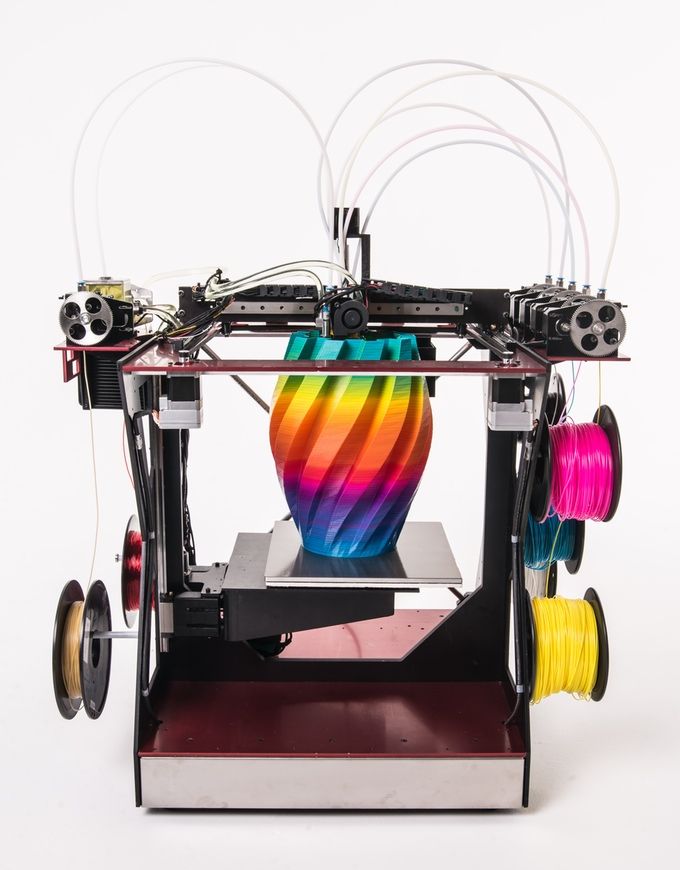 A few operators and craftsmen are enough to service the construction 3D printer. The first successful experiments in the manufacture of building parts and the construction of houses have already been carried out in China and the United Arab Emirates.
A few operators and craftsmen are enough to service the construction 3D printer. The first successful experiments in the manufacture of building parts and the construction of houses have already been carried out in China and the United Arab Emirates. - Electronics. In the manufacture of digital devices, 3D printing will reduce the time for the manufacture of labor-intensive parts, microcircuits and hardware electronics. In particular, 3D printing is already developing the first samples of graphene batteries that have an unlimited service life.
- Mechanical engineering and automotive industry. In this area, with the help of three-dimensional printing, experimental models of future spare parts and parts are created, which later allow the production of products of perfect quality. This is possible due to the detailed study of a three-dimensional object during its creation and printing of a finished computer model, which has a high level of detail.
- Aerospace industry.
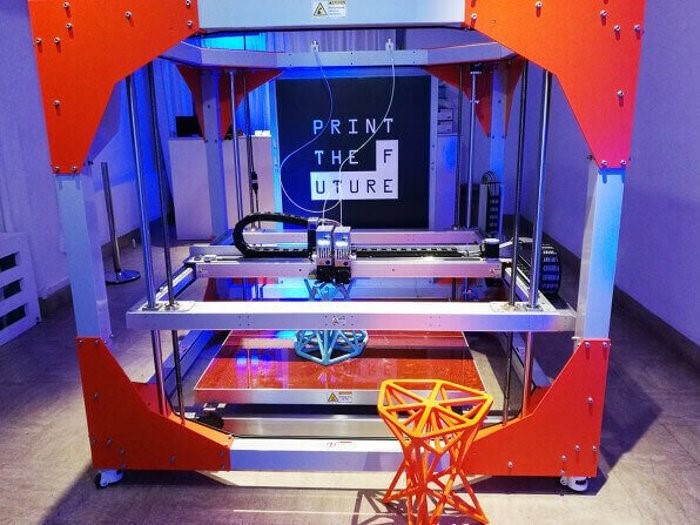 The use of 3D printing in this industry is explained by the ability to create innovative designs of any complexity. Details of satellites, rockets and other space objects are printed from metal, polymers and other types of heavy-duty materials.
The use of 3D printing in this industry is explained by the ability to create innovative designs of any complexity. Details of satellites, rockets and other space objects are printed from metal, polymers and other types of heavy-duty materials. - Medicine and pharmaceuticals. In medicine, 3D printing technology is extremely important. Therefore, in this industry it is studied in great detail. With the help of a 3D printer, it is possible to print prototypes of human organs, prostheses, bone tissue implants. Even the first steps are being taken to develop and print real organs that will take root well in the human body. In the pharmaceutical industry, 3D printing is mainly used to create tablets that will gradually release active substances after ingestion.
- Advertising. For advertising purposes, 3D printers print prototypes of various products, demonstration and handouts.
- Food industry. 3D food printers are especially interesting because they allow you to create edible objects from familiar foods.
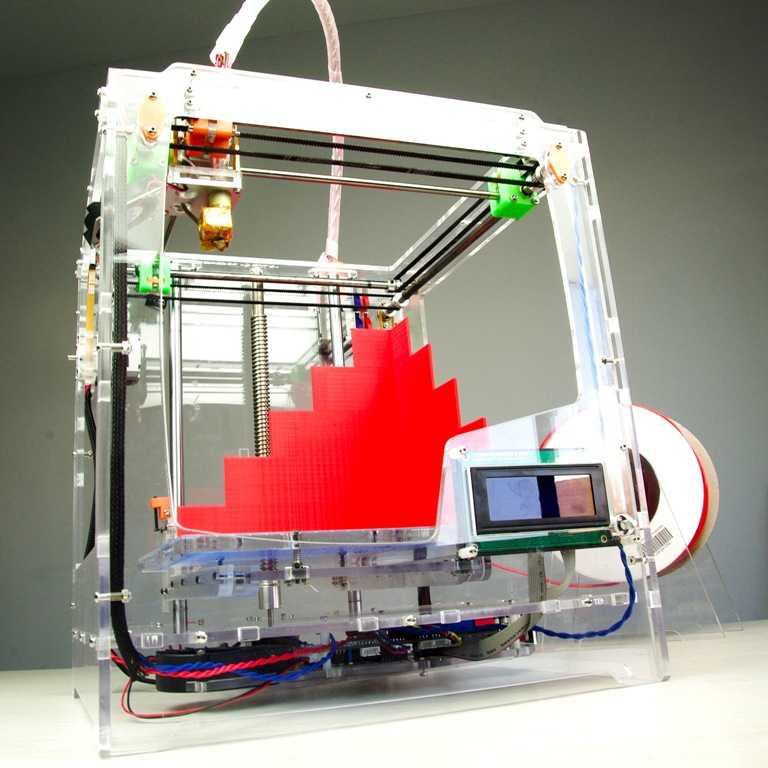 3D printing makes it possible to create unique decorations and complex multi-color objects with high detail.
3D printing makes it possible to create unique decorations and complex multi-color objects with high detail.
The future of 3D printing
3D printing, if properly developed and explored, will be more accessible in the future. Since 3D printers will be common as a work unit in many areas. At the same time, prices for such equipment are likely to fall. Since they will be produced by various companies in large quantities to satisfy the demand of all buyers.
The growing demand for 3D printing will lead to the development of new types of 3D printers and materials for creating products.
Also for larger 3D printing, large-scale equipment will be created that will allow printing very large products for construction needs, engineering and other industries.
Unexpected possibilities of 3D printing
In addition to the standard creation of three-dimensional objects, the development and 3D printing of unique and customized products is also available on a 3D printer.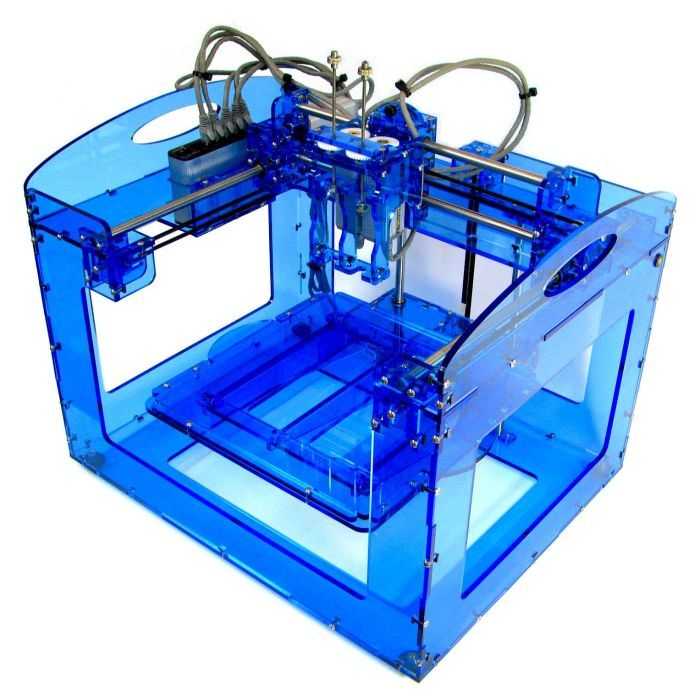 Their shape, structure and design features are limited only by the user's imagination. It is possible to produce unusual products. For example, non-melting ice sculptures, curly perfectly fried pancakes or fine jewelry.
Their shape, structure and design features are limited only by the user's imagination. It is possible to produce unusual products. For example, non-melting ice sculptures, curly perfectly fried pancakes or fine jewelry.
Who is the future of 3D printing?
Primarily, the future of 3D printing depends on inventors who create new types of printers and develop new printing technologies depending on the type of material used. Most often, 3D printing novelties appear in research centers, industrial enterprises and technical departments of various universities. This is due to the fact that people working in such institutions are interested in the development of new technologies. Since innovation will help to improve and improve the processes of creating products in specific areas. In addition to researchers and students, a large number of developments are carried out by children and 3D printing enthusiasts. For example, the invention of the first 3D-printed prosthesis belongs to 17-year-old Easton LaChapelle.
In addition to inventors, organizations that sponsor new developments are also responsible for the continued development and improvement of printing techniques.
Help. Three companies are considered the most famous in the field of 3D printing: Shapeways, Sculpteo and Materialize. They are engaged in the professional development and release of new models of 3D printers, materials, as well as the improvement of existing technologies and the creation of new ones.
What's in store for 3D printing in the next few years?
Experts in the field of 3D printing in 2021 make the following forecasts for its development:
- The spread of 3D printing will be massive. Studios for creating three-dimensional objects will be distributed in much the same way as studios for photocopying and printing materials. 3D printing will be carried out both on standard models and on individual projects.
- Small-scale production of various products will completely switch to 3D printing technology.
 This will help to significantly reduce the price of finished products.
This will help to significantly reduce the price of finished products. - Medical scientists will master the creation of full-fledged and fully compatible organs on a 3D printer, which will be printed from dividing human cells.
- With due diligence confirming the safety of 3D printing for construction purposes, many companies in the industry will start using powerful industrial printers to create the required building elements. At the same time, the time to build houses will be reduced and the proportion of hired workers who perform hard work will decrease.
A revolution in materials
A standard 3D printer uses plastic materials as a filament. However, technology development continues at an accelerated pace. Thanks to this, innovative materials appear on the market, such as:
- Metal powder. This material is mixed with a polymer during printing and is used in the technology of laser sintering of metals. Products printed from a mixture of polymer and metal powder have increased strength comparable to real metal.

- Graphene. This carbon material is being used experimentally to develop a new composite. Ideally, a 3D-printed graphene sheet would be one molecule thick. By weight, the material will be lighter than air, but its strength properties will be very high - the sheet is ten times stronger than steel.
- Ceramic foam. Such material has flexible characteristics that can be changed depending on the purpose of use. From ceramic foam on a 3D printer, you can print both a very light figure and a heavy monument. In theory, development already exists. But it requires a series of tests and stabilization of functional properties.
What are the unusual technology projects of the future?
Among the unusual 3D technologies of the future, special attention should be paid to:
- creation of individualized clothes and shoes, which will be produced on the basis of 3D body scanning;
- make-up created by special portable 3D printers, which is very fast and yet very precise in fine details;
- bioprinting with living cells and creation of tissues and organs from hydrogel.
